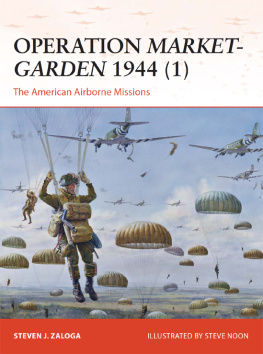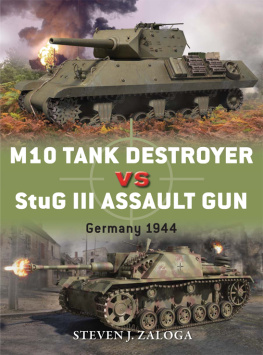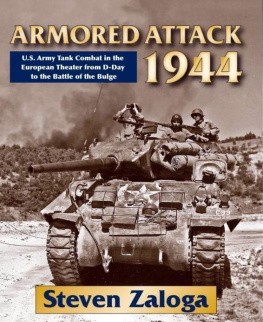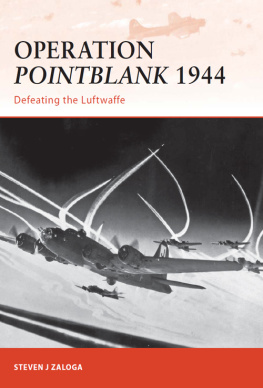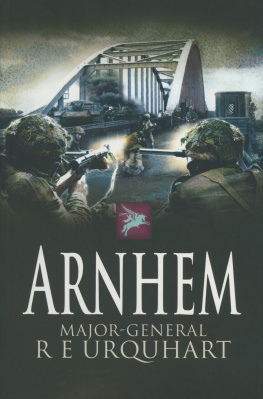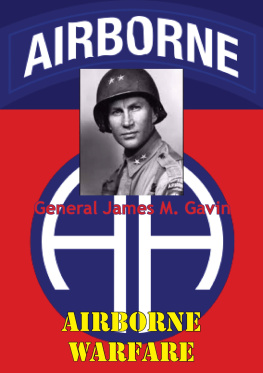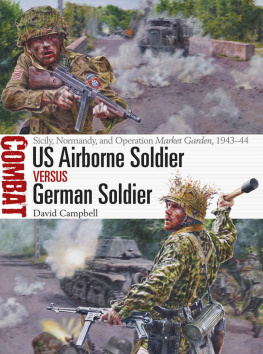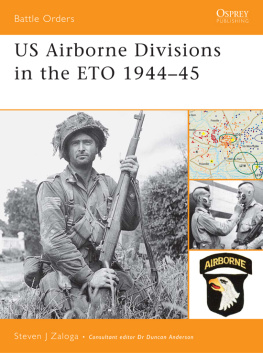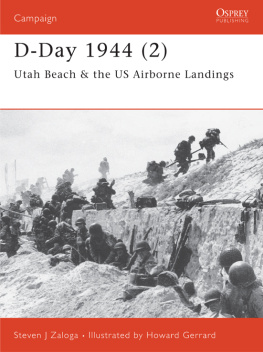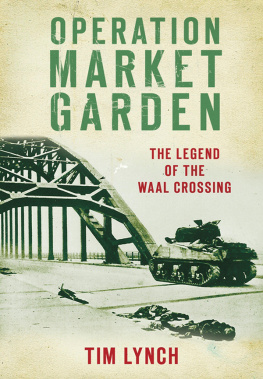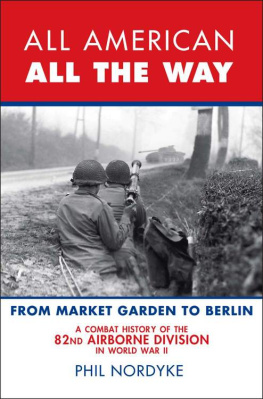Zaloga - Operation Market-Garden 1944 (1): the american airborne missions
Here you can read online Zaloga - Operation Market-Garden 1944 (1): the american airborne missions full text of the book (entire story) in english for free. Download pdf and epub, get meaning, cover and reviews about this ebook. City: Oxford, year: 2014, publisher: Osprey Publishing, genre: Non-fiction. Description of the work, (preface) as well as reviews are available. Best literature library LitArk.com created for fans of good reading and offers a wide selection of genres:
Romance novel
Science fiction
Adventure
Detective
Science
History
Home and family
Prose
Art
Politics
Computer
Non-fiction
Religion
Business
Children
Humor
Choose a favorite category and find really read worthwhile books. Enjoy immersion in the world of imagination, feel the emotions of the characters or learn something new for yourself, make an fascinating discovery.
- Book:Operation Market-Garden 1944 (1): the american airborne missions
- Author:
- Publisher:Osprey Publishing
- Genre:
- Year:2014
- City:Oxford
- Rating:4 / 5
- Favourites:Add to favourites
- Your mark:
- 80
- 1
- 2
- 3
- 4
- 5
Operation Market-Garden 1944 (1): the american airborne missions: summary, description and annotation
We offer to read an annotation, description, summary or preface (depends on what the author of the book "Operation Market-Garden 1944 (1): the american airborne missions" wrote himself). If you haven't found the necessary information about the book — write in the comments, we will try to find it.
Operation Market-Garden 1944 (1): the american airborne missions — read online for free the complete book (whole text) full work
Below is the text of the book, divided by pages. System saving the place of the last page read, allows you to conveniently read the book "Operation Market-Garden 1944 (1): the american airborne missions" online for free, without having to search again every time where you left off. Put a bookmark, and you can go to the page where you finished reading at any time.
Font size:
Interval:
Bookmark:
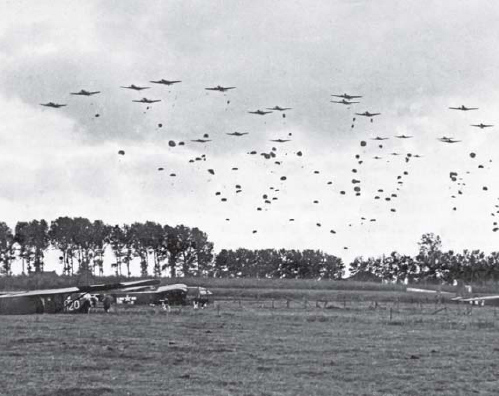
| STEVEN J ZALOGA | ILLUSTRATED BY STEVE NOON |
| Series editor Marcus Cowper |

This book, part of a series on Operation Market-Garden, is focused on the role played by the two US airborne divisions of XVIII Airborne Corps in this controversial campaign. The mission of the 82nd Airborne Division and 101st Airborne Division was to secure the road network between the Belgian border and the bridges at Nijmegen to speed the advance of the British XXX Corps. This mission was eventually accomplished, though with critical delays. The defeat of the British 1st Airborne Division in Arnhem doomed the overall campaign, since, without the Rhine bridge at Arnhem, the overall objective of the campaign was meaningless.
By September 1944, the German Army in the west had been routed and was in full retreat. At peak strength in the summer of 1944 it had consisted of five field armies in two army groups: Heeresgruppe B (Army Group B) controlled northern France and the Low Countries; Heeresgruppe G controlled central, western, and southern France. The two field armies in Normandy, 7. Armee (AOK 7) and Panzergruppe West (later 5. Panzerarmee) had been decimated in the Falaise Gap followed by further losses in the withdrawal over the Seine River in late August 1944 and in encirclements in Belgium in early September 1944. These formations lost most of the Panzer strength in the west. The armies best units were reduced to torso divisions, so-called since they had lost the muscle of their close-combat strength including infantry, Panzer, engineer and reconnaissance troops, but still retained an administrative and logistics core. They had little or no combat value until they could be rebuilt Of the three field armies in Heeresgruppe B, only AOK 15 on the North Sea coast was still intact. Most of its best divisions had been shipped off to Normandy during the summer, and it was left with static infantry divisions, suitable only for coastal defense.
Heeresgruppe G had transferred most of its Panzer forces and many of its better infantry divisions to Normandy during the summer, leaving it with ten infantry divisions and one Panzer division to occupy most of central and southern France. When the Allies conducted the Operation Dragoon amphibious assault on the Riviera coast on August 15, 1944, Heeresgruppe G began to withdraw rather than suffer encirclement by the rapidly advancing US and French divisions. The two field armies lost about 150,000 troops in the ensuing retreat. In total, the German Army in the west suffered about 725,000 casualties in JuneSeptember 1944, consisting of about 55,000 killed in action, 339,000 missing, and 332,000 wounded. In addition, Hitler ordered army and naval personnel in several key fortified ports to remain in place, leaving a further 250,000 troops isolated and abandoned. The last two weeks of August and first weeks of September became known as the Void to German commanders, as the brittle Wehrmacht defensive positions in the west disintegrated.
In the wake of the failed assassination attempt against Hitler on July 20, 1944, purges hit the upper ranks of the army. Rommel had been wounded during a strafing attack in July, and in October was offered the opportunity to commit suicide rather than face a kangaroo court for his complicity in the coup. Gnther von Kluge, Oberbefehlshaber West (OB West: High Command West) commander, took over Rommels command role but committed suicide himself on August 17 after his connection to the coup was suspected in Berlin. The heaviest blows fell on the Ersatzheer (Replacement Army) that had been central to the plot.
The Luftwaffe had been crippled by the Operation Pointblank strategic bombing campaign that had started earlier in 1944, aimed at the German aircraft industry. A far more debilitating campaign began in May 1944 when the US Army Air Force began bombing German synthetic fuel plants, depriving the Luftwaffe of vital aviation fuel. This had a ripple effect within the Luftwaffe, curtailing training, which in turn led to severe attrition amongst the inexperienced new pilots. With rare exceptions, Luftwaffe support of the field armies largely evaporated.
By early September, OB West had only 13 infantry divisions, three Panzer divisions, and two Panzer brigades rated as combat effective. A further 42 infantry divisions and 13 Panzer divisions had been reduced to torso divisions, and of the infantry divisions, seven were simply disbanded. There were barely a 100 tanks still available on the western front. On September 4, the new Heeresgruppe B commander, Generalfeldmarschall Model, warned Hitler that unless ten infantry and five or six Panzer divisions were available by September 15, the door to northwest Europe would stand open. A major concern was that the Allies would stage a bold thrust towards s-Hertogenbosch and Nijmegen in the Netherlands, where there were virtually no German forces at the time.
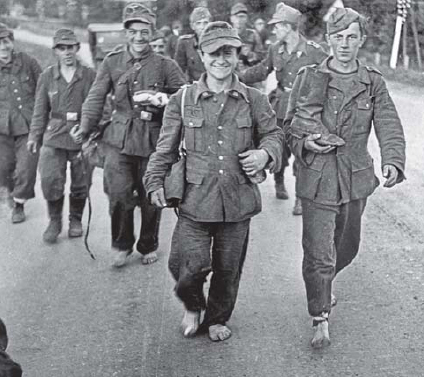
The Void. The rout of the German Army in the West in late August and early September 1944 left the impression with many Allied senior commanders that they were witnessing a repeat of the disintegration of the German army in November 1918. Operation Market-Garden was based on the premise that the Void would continue. A group of young German prisoners near Abbeville in September 1944 are happy that the war is over for them. (MHI)
The Allies were well aware of the dire plight of the Wehrmacht from decrypted Enigma signals intelligence. The rout of the German Army in France and Belgium led many senior Allied commanders to compare the situation to the autumn of 1918 when the German Army collapsed. There was euphoria at Eisenhowers SHAEF headquarters, and the widespread expectation that the war would be over by Christmas. In mid-September, Montgomery proposed a bold scheme to accelerate the German collapse. Allied airborne divisions would land behind the German defense in the Netherlands, securing a path for an armored advance from the Belgian border to the Rhine River at Arnhem. The British tank columns would then be able to cross the Rhine, avoiding the Westwall defensive belt, and strike into Germanys industrial heartland in the neighboring Ruhr.
The rapid pursuit to the German frontier created problems for the Allies. On September 11, 1944, the first day that US Army troops entered Germany near Aachen, the Allies were along a phase line that the Operation Overlord plans did not expect to reach until D+330 May 2, 1945 some 233 days ahead of schedule. Logistics had failed to keep pace with the unexpectedly rapid victories of AugustSeptember 1944. Allied supplies were being delivered to ports more than 500km to the rear of the front lines, including the Normandy beaches, Cherbourg, and Le Havre. The French railway system was a shambles due to Allied pre-invasion bombing. Expedient supply methods including the Red Ball Express and air delivery of critical supplies were adequate for some limited operations but could not sustain the seven Allied field armies in combat in the European theater. Until the nearby port of Antwerp was available, Allied operations along the German frontier would inevitably be constrained.
Font size:
Interval:
Bookmark:
Similar books «Operation Market-Garden 1944 (1): the american airborne missions»
Look at similar books to Operation Market-Garden 1944 (1): the american airborne missions. We have selected literature similar in name and meaning in the hope of providing readers with more options to find new, interesting, not yet read works.
Discussion, reviews of the book Operation Market-Garden 1944 (1): the american airborne missions and just readers' own opinions. Leave your comments, write what you think about the work, its meaning or the main characters. Specify what exactly you liked and what you didn't like, and why you think so.

